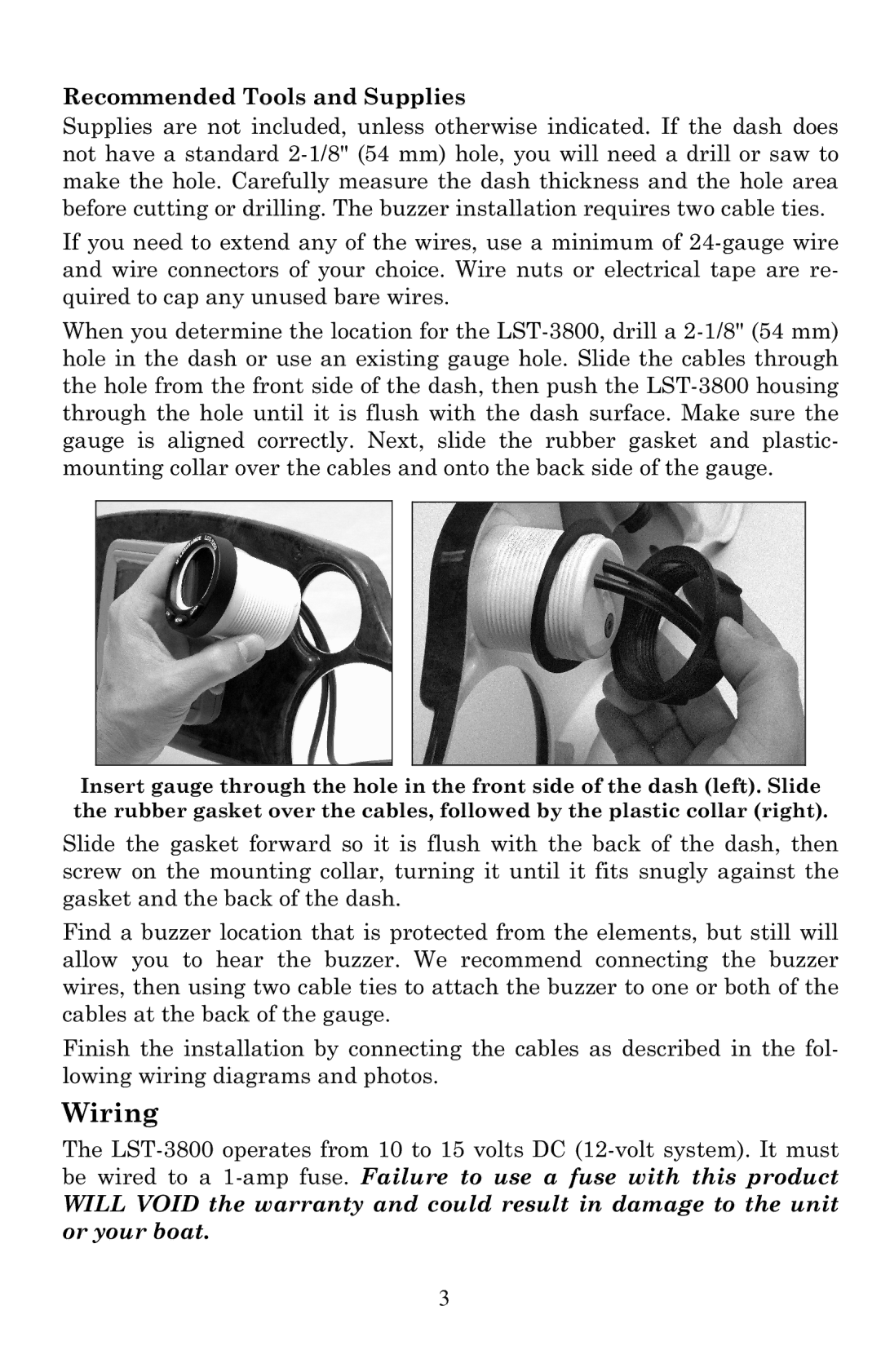
Recommended Tools and Supplies
Supplies are not included, unless otherwise indicated. If the dash does not have a standard
If you need to extend any of the wires, use a minimum of
When you determine the location for the
Insert gauge through the hole in the front side of the dash (left). Slide the rubber gasket over the cables, followed by the plastic collar (right).
Slide the gasket forward so it is flush with the back of the dash, then screw on the mounting collar, turning it until it fits snugly against the gasket and the back of the dash.
Find a buzzer location that is protected from the elements, but still will allow you to hear the buzzer. We recommend connecting the buzzer wires, then using two cable ties to attach the buzzer to one or both of the cables at the back of the gauge.
Finish the installation by connecting the cables as described in the fol- lowing wiring diagrams and photos.
Wiring
The
3
